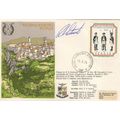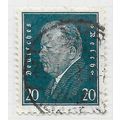Bath, NE Somerset - Pulteney Bridge - Photochrom RP postcard c.1950s
- Condition : Used
- Dispatch : 2 Days
- Brand : None
- ID# : 125000760
- Quantity : 1 item
- Views : 206
- Location : United Kingdom

- Seller : justthebook (+1703)
- Barcode : None
- Start : Fri 28 Feb 2014 10:22:33 (BST)
- Close : Run Until Sold
- Remain : Run Until Sold
More Listings from This Seller view all
Seller's Description
- Postcard
- Picture / Image: Bath - Pulteney Bridge - possibly a real photo
- Publisher: Photochrom Ltd.
- Postally used: no
- Stamp: n/a
- Postmark(s): n/a
- Sent to: n/a
- Notes / condition:
Please ask if you need any other information and I will do the best I can to answer.
Image may be low res for illustrative purposes - if you need a higher definition image then please contact me and I may be able to send one.
------------------------------------------------
Postage & Packing:
UK (incl. IOM, CI & BFPO): 99p
Europe: £1.60
Rest of world (inc. USA etc): £2.75
No additional charges for more than one postcard. You can buy as many postcards from me as you like and you will just pay the fee above once. (If buying postcards with other things such as books, please contact or wait for invoice before paying).
Payment Methods:
UK - PayPal, Cheque (from UK bank) or postal order
Outside UK: PayPal ONLY (unless otherwise stated) please. NO non-UK currency checks or money orders (sorry).
NOTE: All postcards are sent in brand new stiffened envelopes which I have bought for the task. These are specially made to protect postcards and you may be able to re-use them. In addition there are other costs to sending so the above charge is not just for the stamp!
I will give a full refund if you are not fully satisfied with the postcard.
----------------------------------------------
Text from the free encyclopedia WIKIPEDIA may appear below to give a little background information (internal links may not work) :
*************
Pulteney Bridge crosses the River Avon in Bath, England. It was completed by 1774, and connected the city with the newly built Georgian town of Bathwick. Designed by Robert Adam in a Palladian style, it is one of only four bridges in the world with shops across its full span on both sides. It has been designated as a Grade I listed building.[1]
Within 20 years of its construction, alterations were made that expanded the shops and changed the façades. By the end of the 18th century it had been damaged by floods, but it was rebuilt to a similar design. Over the next century alterations to the shops included cantilevered extensions on the bridge's north and south faces. In the 20th century several schemes were carried out to preserve the bridge and partially return it to its original appearance, enhancing its appeal as a tourist attraction.
The bridge is now 45 metres (148 ft) long and 18 metres (58 ft) wide. Although there have been plans to pedestrianise the bridge, it is still used by buses and taxis. The much photographed bridge and the weir below are close to the centre of the city, which is a World Heritage Site largely because of its Georgian architecture.
One of only four bridges in the world to have shops across its full span on both sides, the structure was designed by Robert Adam;[2][3] his original drawings are preserved in the Sir John Soane's Museum in London.[1][4]
The bridge is named after Frances Pulteney, wife of William Johnstone. He was a wealthy Scottish lawyer and Member of Parliament. Frances was the third daughter of MP and government official Daniel Pulteney (1684–1731) and first cousin once removed of William Pulteney, 1st Earl of Bath. She inherited the Earl's substantial fortune and estates close to Bath in Somerset after his death in 1764 and that of his younger brother and heir in 1767, and the Johnstones changed their surname to Pulteney. The rural Bathwick estate, which Frances and William inherited in 1767, was across the river from the city and could only be reached by ferry. William made plans to create a new town, which would become a suburb to the historic city of Bath, but first he needed a better river crossing.[2] The work of the Pulteneys is memorialised by Great Pulteney Street in Bathwick,[5] and Henrietta Street and Laura Place, named after their daughter Henrietta Laura Johnstone.[6][7]
Initial plans for the bridge were drawn up by Thomas Paty, who estimated it would cost £4,569 to build, but that did not include the shops.[8] A second estimate of £2,389 was obtained from local builders John Lowther and Richard Reed; it included two shops at each end of the bridge, but work did not begin before winter weather made construction of the pillars impossible. In 1770 the brothers Robert and James Adam, who were working on designs for the new town at Bathwick, adapted Paty's original design.[8] Robert Adam envisaged an elegant structure lined with shops, similar to the Ponte Vecchio and the Ponte di Rialto he would likely have seen when he visited Florence and Venice. Adam's design more closely followed Andrea Palladio's rejected design for the Rialto.[2] The revised bridge was 15 metres (50 ft) wide, rather than the 9.1 metres (30 ft) width envisaged by Paty, which overcame the objections of the local council about the bridge being too narrow.[8]
Construction started in 1770 and was completed by 1774 at a cost of £11,000.[9] The builders for the lower part of the bridge were local masons Reed and Lowther; the shops were constructed by Singers and Lankeshere.[8]
Pulteney Bridge stood for less than 20 years in the form Adam created. In 1792 alterations were made during which the bridge was widened to 18 metres (58 ft) and the shops enlarged, converting the original sixteen shops into six larger ones.[8] Floods in 1799 and 1800 wrecked the north side of the bridge, which had been constructed with inadequate support. Thomas Telford suggested replacing the bridge with a single span cast iron bridge. However it was rebuilt by John Pinch senior, surveyor to the Pulteney estate, in a less ambitious version of Adam's design.[9] Nineteenth-century shopkeepers changed the structure and appearance of their premises by changing windows, or expanding them by adding cantilevers over the river. Some painted advertisements on the outside of their shops, affecting the view from the river and Grand Parade.[8] The western end pavilion on the south side was demolished in 1903 for road widening and its replacement was not an exact match.[8]
In 1936 the bridge was designated an ancient monument.[10] The city council bought several of the shops and made plans for the restoration of the original façade,[8] which was completed in time for the Festival of Britain in 1951.[4] Further work was carried out in the 1960s to repair the underside soffits of all three arches.[11] More restoration of the southern street facade was needed in 1975.[2] The status of the bridge as an ancient monument was replaced in 1955 with its designation as a Grade I listed building.[10]
In 2009 Bath and North East Somerset council put forward a proposal to ban vehicles from the bridge and turn it into a pedestrianised zone,[12][13] but the plan was abandoned in September 2011.[14]
type=real photographic (rp)
theme=topographical: british
sub-theme=england
county/ country=somerset
number of items=single
period=1945 - present
postage condition=unposted
Listing Information
| Listing Type | Gallery Listing |
| Listing ID# | 125000760 |
| Start Time | Fri 28 Feb 2014 10:22:33 (BST) |
| Close Time | Run Until Sold |
| Starting Bid | Fixed Price (no bidding) |
| Item Condition | Used |
| Bids | 0 |
| Views | 206 |
| Dispatch Time | 2 Days |
| Quantity | 1 |
| Location | United Kingdom |
| Auto Extend | No |



 for 1 item(s)
for 1 item(s)


![Van Gogh, Vincent - Sunflowers [4th] - National Gallery art postcard c.1960s](https://pic.ebid.net/upload_medium/2/7/0/1424731301-1918-150.jpg)














